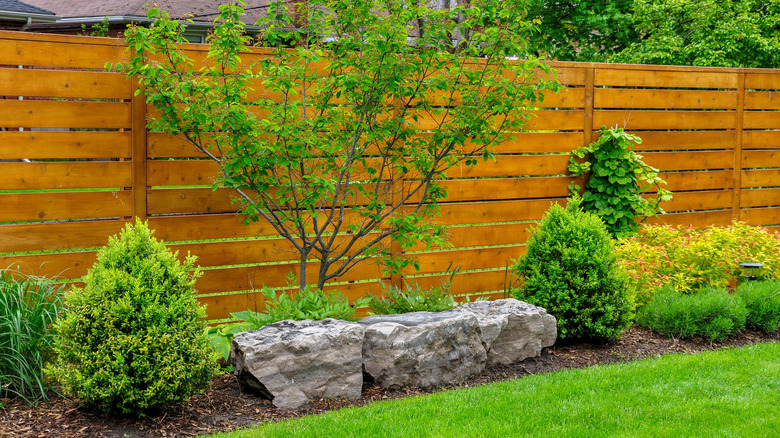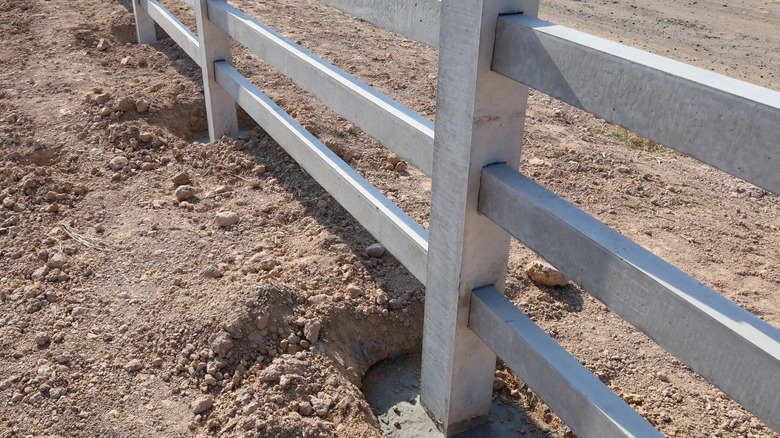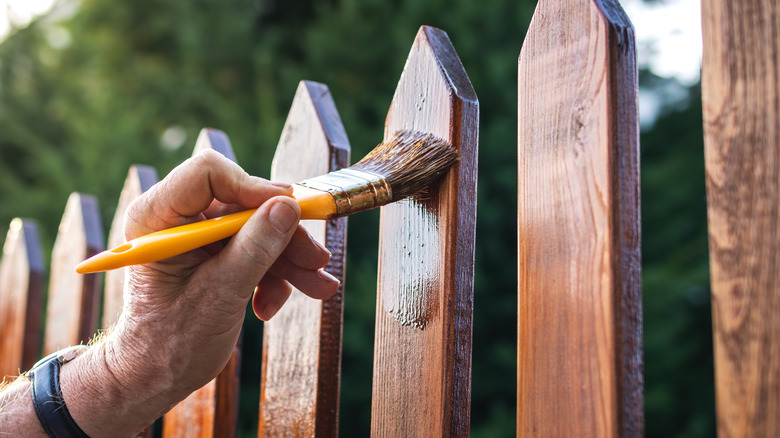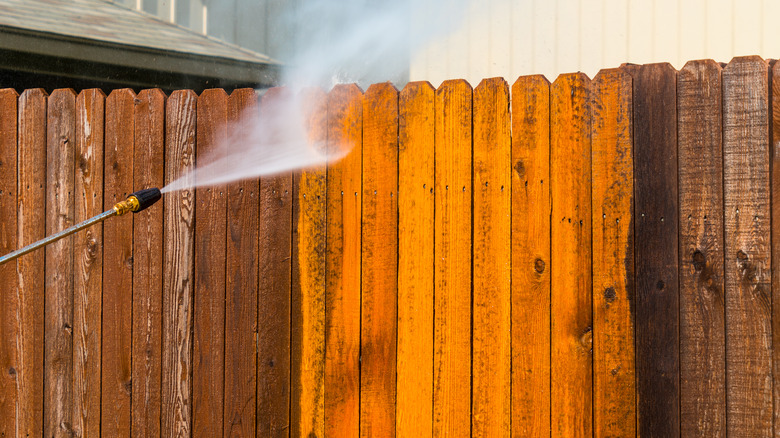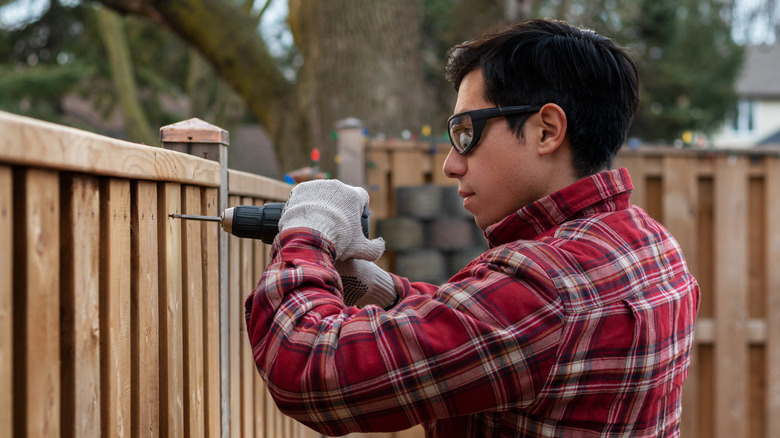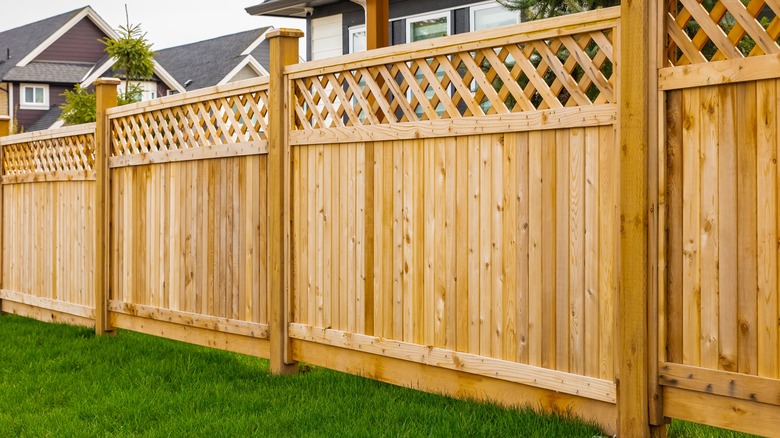5 Tips To Help Keep Your Fence Posts From Rotting
Fences are fantastic assets to have on your property. They keep kids and pets inside and safe from outside dangers while also keeping out deer and other pests from ruining your yard or eating your garden. However, fences can be expensive to install, so it's crucial to care for them and protect them from rot.
According to Greenhill Fencing, there are two types of rot to be aware of: wet rot and dry rot. Wet rot occurs when too much moisture is held against the wooden post, either by weather, dirt, vegetation, or poor installation. Symptoms of wet rot are fungal growth, cracking, and softening of wood. Dry rot is when the fence post is exposed to extreme heat and dry elements, and the wood is essentially baked in the sun. Brittle, easily broken, and crumbling wood are symptoms of dry rot. Consider your own environmental conditions and how this will affect the type of rot your fence will be most at risk of.
Materials are important
The materials used to build your fence will significantly determine how well it holds up against elements over time. During the process of selecting materials to use for your fence, take the time to figure out what's best. For example, cedar, redwood, acacia, and cypress are all hardy woods that are naturally resistant to rot, explains TableLegsOnline. While these options tend to be more expensive, they will ultimately save you money in the long run. You can also opt for treated wood posts, which are coated with a protective chemical to help them withstand outdoor weather.
For another layer of protection, Greenhill Fencing suggests setting the fence posts in concrete when installing the fence. The concrete creates a barrier between the soil and the wooden post, so it's much less likely to rot. Additionally, you could opt for wood alternatives like metal or plastic, but these have their own issues to contend with.
Protect the posts by staining
One way to protect your wooden fence is to stain it, suggests Greenhill Fencing. Typically it's recommended that you stain your fence once a year. However, this time can be increased or decreased depending on your local climate factors. The factors you'll want to keep in mind are average temperatures, rainfall, and the type of soil around your fence post. For example, soils with heavy amounts of clay will hold water and won't allow it to drain away. Alternatively, sandy soils drain quickly and won't have standing water for very long, if at all.
According to Weald Fencing Contractor, you can also apply a treatment of copper naphthenate to the fence before installing it. This is an eco-friendly chemical that's safe to use around gardens. Apply a layer to the fence post, wait an hour, and then apply another layer. Repeat this process until the fence won't absorb any more of the chemical. This won't keep the fence safe from rot forever, but it's a barrier to use in addition to regular fence maintenance.
Keep the fence clean
Almost everything in our lives holds up over time much better when we keep them clean and cared for. Fences are no different. When dirt and grass clippings get stuck to a fence, they hold moisture onto the wood, and this can cause rot faster than almost anything, warns Greenhill Fencing. So it's vital to the health of your fence to clean it regularly. You can do this with a power washer and blasting off debris, which is a fast and effective option.
Alternatively, you can use a bucket and scrub brush with either baking soda or vinegar. These are safe for the environment around the fence, and it's safer on your hands. Moreover, you should keep plants from growing on or too close to the fence. Just like with dirt, plants near the fence will introduce moisture and possibly rot. Even though vines growing along a fence is aesthetically pleasing, it's terrible for the health of the fence and should be avoided.
Stay on top of repairs
Even with the best care and expert installation, fence posts can still succumb to rot due to elements outside of our control. To avoid rot spreading to clean wood and causing a more significant issue, inspecting your fence regularly is recommended. A great time to do this is while cleaning it.
If you notice signs of rot or damage, Gulf Coast Fence Co. explains that it is essential to repair the fence immediately whether you are doing it yourself or hiring a professional. Remove any posts that are starting to rot and replace them with new ones. Rot can spread quickly, so this isn't a chore you'll want to put off. If left untreated, your fence will eventually need more extensive repairs and might even need to be replaced entirely. Again, this is a massive headache and a costly mistake that you can easily avoid with regular checkups.
Post protection products
Other than staining and protective chemicals, there are additional post-protection products on the market that can significantly reduce the risk of rotting. One of those products is a post-saver sleeve, notes Fence Armor. This is a sleeve that fits over the bottom of the post and then shrinks to the post using heat. The interior liner of the sleeve seals to the post and creates a water and air-tight seal that protects the wood from outside elements. It's easy to apply, but it may be an expensive investment, depending on how long your fence is.
You can find other types of sealants and protectants at your local hardware store that can be applied with a paintbrush like a stain (via HGTV). As mentioned above, staining the fence is a great way to protect the fence, and many stains are sealants as well. This method could save you money and gives you the option to stain it in a color you find appealing.
